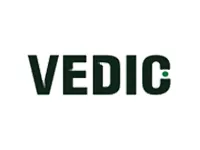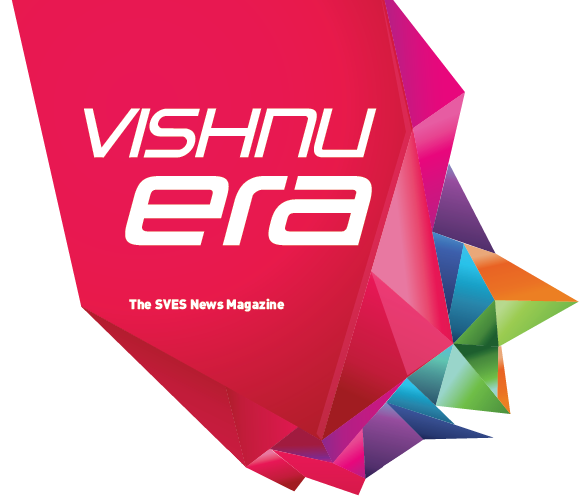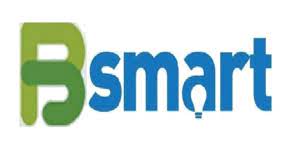The laboratories in the department of Electronics and Communication Engineering are designed to provide students with hands-on experience. Laboratories assist students to analyse practical aspects of various courses. The department has well-equipped laboratories with all the necessary hardware and software to conduct various laboratory courses prescribed in curriculum and beyond. A standard procedure is followed for smooth conduction of laboratory sessions which includes etiquettes.
Electronics Lab – I is a foundational laboratory designed to introduce undergraduate students to the principles and practical aspects of analog and digital electronic circuits. It supports the curriculum for Electronics and Communication Engineering students and lays the groundwork for more advanced experimentation in subsequent semesters. The lab focuses on developing students’ circuit design, assembly, and testing skills through hands-on experiments and IC-based applications.
Infrastructure and Capacity:
The lab is equipped with 12 well-furnished benches, each designed to accommodate up to 3 students, allowing 36 students per session. Every bench is fitted with essential instruments including Cathode Ray Oscilloscopes (CROs), Function Generators, Regulated Power Supplies. Adequate space and infrastructure ensure a comfortable working environment for collaborative learning and experimentation.
Equipment and Components:
A comprehensive stock of Analog and Digital ICs, active components (diodes, transistors, op-amps), and passive components (resistors, capacitors, inductors) is maintained. Trainer kits and breadboards are provided to facilitate easy circuit assembly.
Key components and instruments available:
- Analog ICs: Op-Amps (e.g., LM741, TL082), Voltage Regulators (e.g., 7805, 7812)
- Digital ICs: Basic gates, flip-flops, counters, timers (e.g., 555), and encoders/decoders
- Instruments: CROs, Function Generators, Multimeters, Dual Power Supplies
Labs Conducted:
The lab supports experiments from the following practical courses:
- Elements of Electronics and Communication Engineering Lab
- Analog Electronic Circuits Lab
- Linear and Digital IC Applications Lab
Electronics Lab – II is a core laboratory that provides students with practical exposure to fundamental concepts in electronic device behavior and analog circuit design. It is primarily designed for undergraduate students in Electronics and Communication Engineering. This lab supports the understanding and application of electronic devices such as diodes, BJTs, and FETs. Students learn to design and analyze circuits like rectifiers, amplifiers, and oscillators, forming a strong foundation for advanced electronics and project work.
Infrastructure and Capacity:
The lab is equipped with 12 spacious workbenches, each accommodating up to 3 students, allowing a total of 36 students per session. Each bench is furnished with essential testing and measurement instruments including Cathode Ray Oscilloscopes (CROs), Function Generators, and regulated power supplies. The lab environment is conducive to collaborative learning and supports detailed circuit construction and testing.
Equipment and Components:
A wide range of components and instruments is available for conducting experiments related to analog and electronic circuit design. This includes passive components, semiconductor devices, and standard lab instruments. Key components and instruments include:
- Diodes (e.g., Zener, PN Junction), BJTs (NPN/PNP), and FETs (JFET, MOSFET)
- Resistors, Capacitors, Inductors
- CROs, Function Generators, Multimeters, Regulated Power Supplies
Labs Conducted:
This lab supports the curriculum through the following practical courses:- Electronic Devices and Circuits Lab
- Analog Circuits Lab
- Electronic Circuit Analysis Lab
Electronics Lab – III is a well-equipped digital electronics laboratory designed to provide hands-on experience to students in the field of digital circuit design and implementation. The lab serves as a crucial part of the curriculum for undergraduate students pursuing courses in Electronics and Communication Engineering, Electrical Engineering, and Computer Science, enabling them to bridge the gap between theoretical knowledge and practical application.
Infrastructure and Capacity:- The lab comprises 12 spacious workbenches, each designed to comfortably accommodate groups of students working collaboratively.
- The total capacity of the lab is 36 students per session, ensuring adequate individual attention and sufficient time for circuit building and testing.
- Each workbench is equipped with regulated power supplies, digital multimeters, and oscilloscopes, facilitating comprehensive testing and debugging of digital circuits.
- The lab maintains an extensive stock of 74-series digital Integrated Circuits (ICs), including basic logic gates (AND, OR, NOT, NAND, NOR, XOR, XNOR).
- A wide range of Medium Scale Integration (MSI) ICs is available for implementing various combinational and sequential logic functions, such as:
- Combinational ICs: Multiplexers, Demultiplexers, Encoders, Decoders, Adders, Subtractors, and Comparators.
- Sequential ICs: Flip-Flops (SR, JK, D, T), Counters (asynchronous and synchronous), Shift Registers, and Latches.
- Breadboards, connecting wires, and logic probe testers are provided for ease of circuit assembly and verification.
- The lab is specifically designed to enhance students’ understanding of Boolean logic and its implementation using standard digital ICs.
- Students gain proficiency in designing and implementing combinational and sequential circuits such as:
- Binary Adders/Subtractors
- Multiplexer/De-multiplexer
- Encoder/Decoder circuits
- Flip-flop-based circuits and applications
- Counters and shift registers
- Finite State Machines (FSMs)
- Through these practical sessions, students acquire the ability to:
- Analyze and simplify logic expressions using Boolean algebra and Karnaugh maps.
- Translate logic expressions and truth tables into real-time circuit implementations.
- Understand the internal functioning and timing behavior of digital components.
- Develop critical thinking and problem-solving skills essential for system-level digital design.
Digital Logic Design Lab.
Digital Electronics Lab.
The Communications Laboratory provides a comprehensive platform for students to gain practical insights into modern communication technologies, bridging theoretical concepts with hands-on experimentation. This lab supports a wide range of experiments across microwave engineering, optical communication, Internet of Things (IoT), and modulation techniques.
Key highlights of the laboratory include:
Microwave and Optical Communication Experiments: Students explore wave propagation, guided media, and practical components such as antennas, waveguides, couplers, and photonic systems. Experiments include microwave power measurement, VSWR calculations, optical fiber transmission and reception, and characterization of optoelectronic devices.
Internet of Things (IoT) Experiments: The lab is equipped with IoT development boards and sensors to help students design and implement real-time monitoring and control systems. Students work on cloud based IoT applications, wireless data transmission, sensor integration.
Vector Network Analyzer (VNA): The VNA setup enables students to measure S-parameters, analyze impedance matching, and evaluate RF components, crucial for high-frequency communication system design and analysis. The students can verify the microstrip antenna parameters using the Vector network analyzer for the frequencies 1 MHz to 3 GHz.
Analog and Digital Modulation Systems: Students perform experiments on AM, FM, PM, ASK, FSK, PSK, QAM, and more. These experiments help develop a strong foundation in modulation, demodulation, and spectral analysis techniques.
The laboratory is well-furnished with:
- All required trainer kits for microwave, optical, Analog and Digital modulation, and IoT experiments
- 12 benches with 12 computers running both Windows and Linux (Ubuntu) operating systems to support software simulations and coding
- A spectrum analyzer for observing and analyzing frequency spectra of various signals
- 6 Microwave benches set up for conducting experiments related to microwave devices and circuits.
This lab plays a vital role in preparing students for industry and research careers in wireless communication, optical networks, IoT systems, and RF/microwave engineering.
Labs Conducted:
- Analog and Digital Communications
- Microwave and Optical Communications
- Advanced Communication Lab
- IoT Architectures & Protocols Lab
Simulation Lab – I is a well-equipped computing facility designed to support curriculum-based laboratories and domain-specific training in the areas of Communications, Image Processing and Real-time Embedded Systems. The lab enables students to simulate, analyze, and implement engineering concepts using industry-standard software tools and hardware platforms.
The lab houses 35 well-configured computer systems, all networked through a high-speed LAN with reliable wired internet connectivity, enabling seamless access to licensed software tools and cloud-based simulation platforms. An LCD projector is installed to facilitate instructor-led demonstrations, interactive learning sessions, and technical seminars.
System Configuration:
- Processor: Intel Core i3 @ 3.59 GHz
- RAM: 8 GB
Operating System Available:
- Windows 10 / 11
Software and Tools:
- MATLAB & Simulink (Campus-Wide License): For modeling, simulation, algorithm development, hardware interfacing, real-time testing, and application building
- Code Composer Studio: For implementing real-time DSP algorithms on TMS320C6745 DSPs
- EDA Playground (Open-source): For HDL design, simulation, and verification using SystemVerilog
- Microwind (Open-source): For CMOS layout design and VLSI simulation
- QNX Software Development Platform: for Embedded Systems training and focusing on Real-Time OS concepts.
Hardware Development Kits:
- TMS320C6745 DSP Starter Kits: For real-time signal processing and embedded hardware interfacing
Applications of the Lab:
- Curriculum-Based Laboratory Courses in:
- Basic Simulation Lab
- Digital Signal Processing Lab
- Signals and Systems Lab
- CMOS Analog IC Design Lab(PG)
- System Verilog Test Benches using UVM Lab(PG)
- Domain-Specific Trainings (DSTs) in:
- Communications, Image Processing using MATLAB, Model Design using SIMULINK, and App design using App Designer in MATLAB
- Real-Time OS concepts in Embedded Systems using QNX
Simulation Lab – I provide an integrated environment for students to gain practical experience with industry-relevant tools and hardware, supporting hands-on learning and bridging the gap between theoretical knowledge and real-world applications in Communications, Image Processing, and Real-Time Embedded Systems.
The Simulation Lab-2 is a state-of-the-art facility designed to support curriculum-based laboratories and domain-specific training (DST) in the areas of VLSI Design and Embedded Systems. The lab is equipped with 36 computers with decent configuration; all interconnected via LAN and high-speed wired internet connectivity to support tool license access, and cloud-based simulations. An LCD projector is installed to facilitate instructor-led demonstrations, seminars, and interactive learning sessions.
Operating Systems Available:- Windows 10 / Windows 11
- Linux (CentOS 7.9)
- Xilinx Vivado Design Suite (Systems Edition) – for FPGA-based digital design and simulation.
- Synopsys EDA Tools (Front-end & Back-end) – for ASIC design flow including synthesis, simulation, place & route, and verification.
- QNX Software Development Platform – for embedded systems training focusing on real-time OS concepts.
- NI Multisim – for electronic circuit design, analysis, and simulation.
- Nexys A7 FPGA Boards – for hands-on FPGA prototyping and digital design.
- 8086 Microprocessor Kits – for microprocessor architecture and assembly language programming.
- 8051 Microcontroller Kits – for embedded system programming and interfacing.
- ARM Cortex-M3 Kits – for advanced embedded systems development and ARM architecture-based projects.
- Curriculum-Based Laboratory Courses in:
- UG: Microcontrollers (MC) Lab
- UG: Microprocessors and Microcontrollers (MPMC) Lab
- UG: CMOS VLSI Design (CVD) Lab
- UG: Electronic Circuit Analysis (ECA) Lab
- PG: Digital System Design with FPGAs (DSDF) Lab
- PG: VLSI Advanced Physical Design (VAPD) Lab
- Domain-Specific Trainings (DSTs) in:
- VLSI Design Flow using Synopsys Tool
- Real-Time Embedded Systems using QNX
The Simulation Lab-2 serves as a comprehensive platform for students to gain practical exposure to industry-standard tools and hardware, fostering hands-on learning and bridging the gap between academic curriculum and industry practices in VLSI, Embedded Systems and Processors/Controllers domains.





